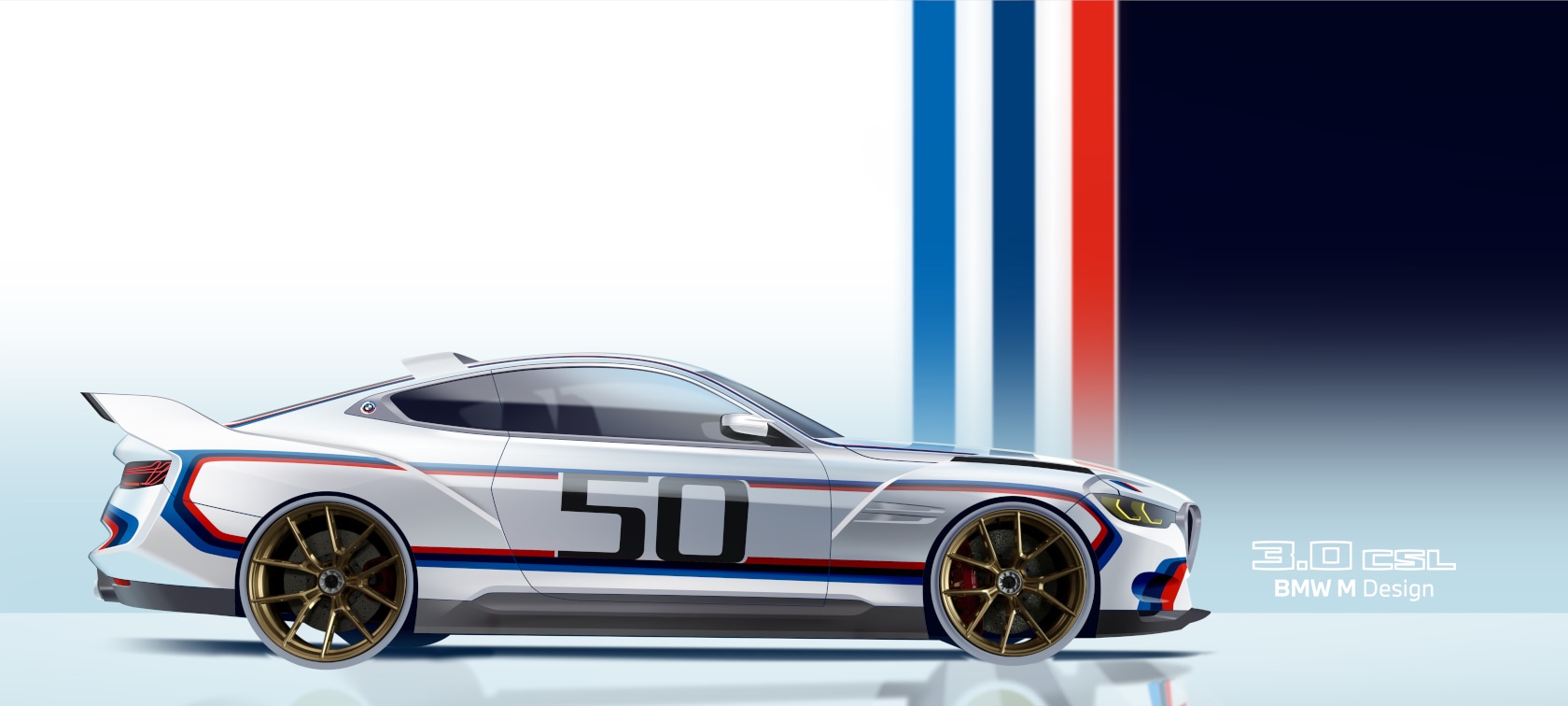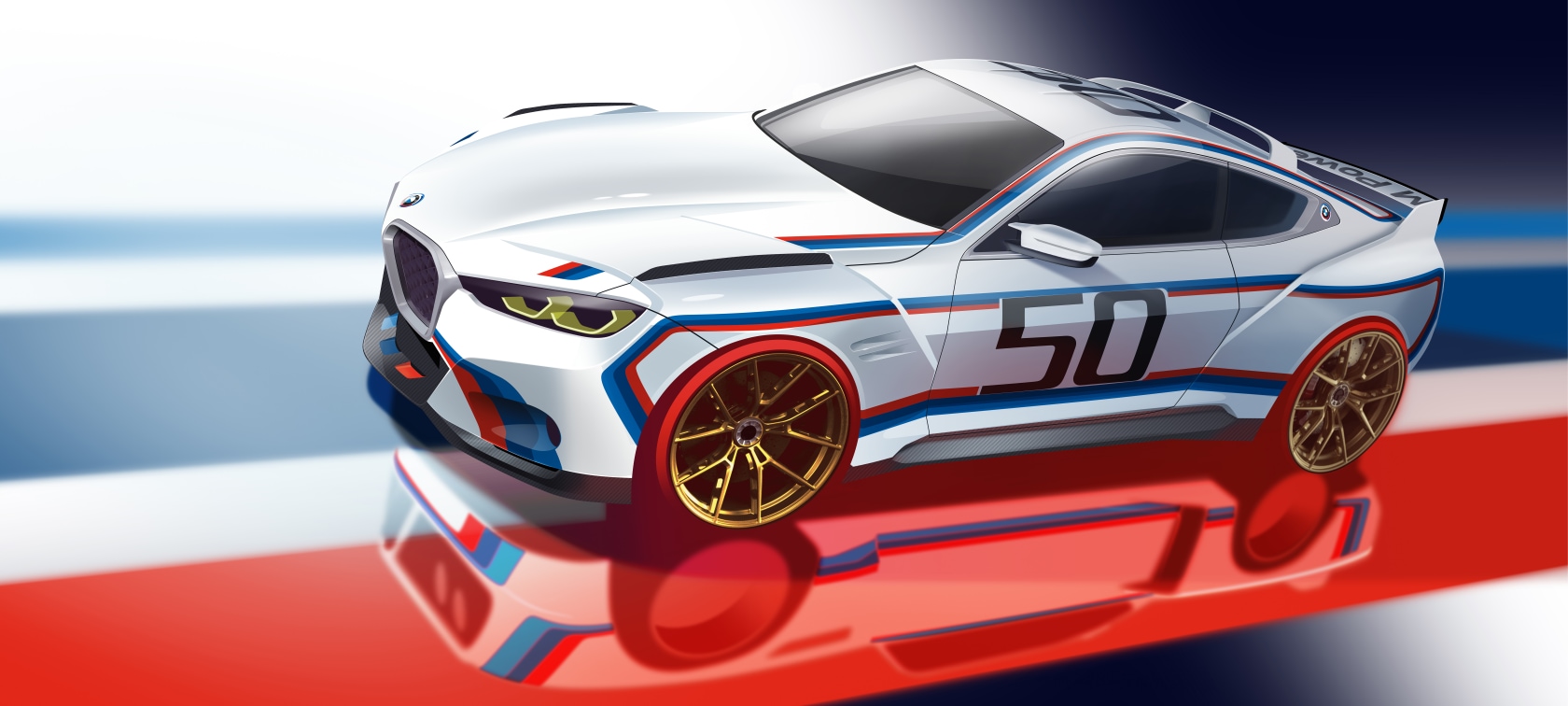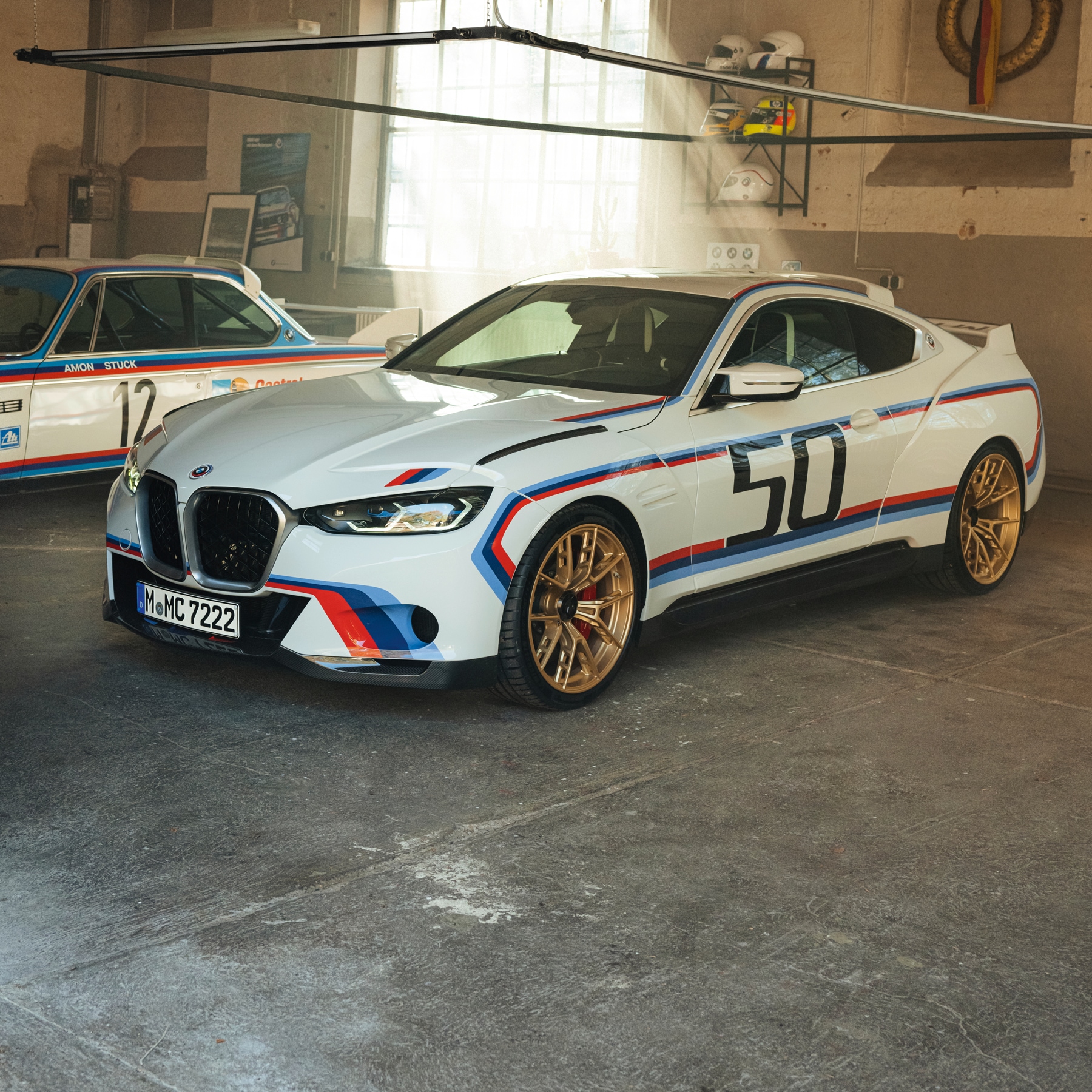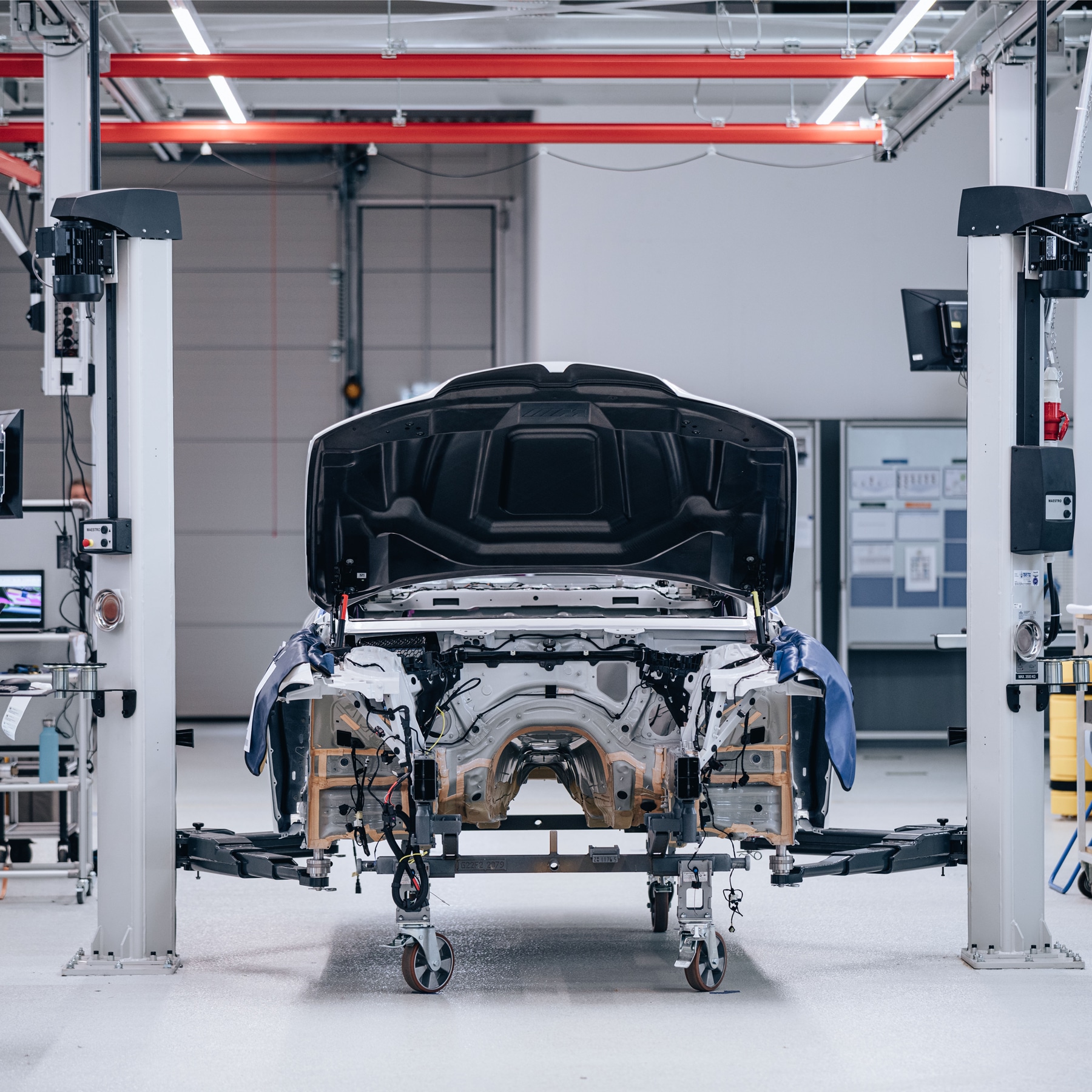As the last highlight of its 50th anniversary year, BMW M is putting a legend back on the street: the BMW 3.0 CSL. Exactly 50 years after its iconic predecessor was presented, BMW M is reanimating a model that will delight not only BMW M fans. The M automobile is more than a worthy successor. The new 3.0 CSL quotes its famous ancestor and brings its impressive uncompromising nature into the here and now, while setting accents of its own, accents that speak a clear language: This M model is the essence of 50 years of racing passion.
"EVERY DESIGNER’S DREAM".
The breath-taking design comes from the pen of Viktor Bär. When asked to design the new BMW 3.0 CSL, the Project Lead Exterior Design BMW M agreed enthusiastically. "To create a vehicle like the 3.0 CSL is the dream of every designer, because you can really go flat out – in fact you almost have to," he says. In doing so, justice has to be done to the forefather, which was fashioned without compromise.

With the BMW 3.0 CSL, we’ve succeeded in designing a show car for the street.
Project Lead Exterior Design BMW M
NEW INTERPRETATION.
At first, various designs were created: some completely free and others which stuck very closely to the original legendary automobile of the 1970s – so that Bär and his team could better understand the vehicle and its proportions. "In the end we found a kind of symbiosis. A new interpretation with many quotes from the historic 3.0 CSL," says the designer. The widening features for example, which are functionally necessary, but should at the same time do justice to modern vehicle geometry. The original vehicle was fitted with "boxes" in the side walls to accommodate the wider wheels. On the new version of the car, these have been integrated more subtly: the widening elements run from the side walls through to the bonnet. At the rear, the elements form the attractive rear wing.
In this car, the focus was on the aesthetics – and elements which might compromise the car’s overall look were either omitted or subordinated to the demands of the aesthetics. To underline the vehicle’s puristic character, the parking sensors on the bumpers have been left out. In order to achieve a more harmonious overall look, the emblem is located in the main cooling area and not on the kidneys. At the back, the emblem is placed below the boot lid to create the effect of greater width.


NEW MATERIALS, NEW OPPORTUNITIES.
Five decades lie between the historic vehicle and the new version. What unites both is the rigorous lightweight construction – as the name CSL implies: coupé, sport, lightweight construction. Viktor Bär, however, had completely different materials at his disposal than his predecessors in the 1970s and this gave him more latitude regarding the design.
"While many of the components of the historic vehicle were of aluminium, which at the time was a high-tech material, the bodywork of the modern CSL is largely made of CFRP, carbon-fibre reinforced plastic," says the designer. "This material, which is widely used in motorsports and aerospace, is very light and stiff and allows much more exact contours." The special roof spoiler is an exception, which along with excellent aerodynamics and design has a third task to fulfil: it houses the aerial, whose signal could be compromised by other materials. That’s the reason that the spoiler is made of glass-fibre reinforced plastic (GRP).
THE LIVERY.

THE LIVERY.
What has always distinguished the 3.0 CSL is not only the impressive design, but also its unique livery. The basic Alpine White paintwork bears stripes in the M colours, applied elaborately by hand. 134 steps have to be performed to put these graphics on the car. This livery has been matched to the geometry of the new 3.0 CSL by Viktor Bär’s design team. Otherwise they have remained faithful to the template: "The historic livery is so strong, so unique – so distinctive that we didn’t to reinvent it."


SO MANY HIGHLIGHTS.
It’s no wonder that Viktor Bär has difficulty naming his own personal design highlight. Among his favourites is the rear wing, which blends in harmonically with the overall picture, while at the same time being extremely functional and allowing free access to the boot. Then there are the modern lateral extensions which make the 3.0 CSL unmistakeable or the slimmed-down graphics of the front and rear lights. And he’s very proud of the side window surrounds: satinized in aluminium with the classic Hofmeister kink and integrated BMW emblem. Thus the window graphics echo the historic vehicle – but in modern fashion.

One cool feature of the BMW 3.0 CSL is the removable licence plate holder at the front. For aesthetic reasons, this is located in the air vent at the centre of the front and not near the kidneys. This would limit the air intake for the engine when racing, so the holder and licence plate can be removed in no time per twist lock. A feature which is unique to the BMW 3.0 CSL.
Project Lead Exterior Design BMW M
A WEALTH OF DETAIL.
Alongside the artfully fashioned elements mentioned, there are new, specially developed highlights. These include the exclusive golden wheels with Y-shaped spokes and central locking. "The whole vehicle is studded with special features," says Viktor Bär. There are the fins on the front side walls, another echo of the historic vehicle. Then there’s the fact that the 3.0 CSL can be race-ready without the need for additional setting changes immediately after starting the engine, as shown by the modern design of the speedometer and rev counter. The overall impression is rounded off off by an exclusive 3.0 CSL graphic in the instrument display. "That was only finished at the last moment," reveals Bär. Just one of the achievements of the highly committed team that designed and realized the 3.0 CSL. "Every single team member was on fire from the first day to the last – the whole team put their heart and soul into it. When I saw the finished vehicle for the first time, I was over the moon. It’s an honour for any designer to work on a project like this."




